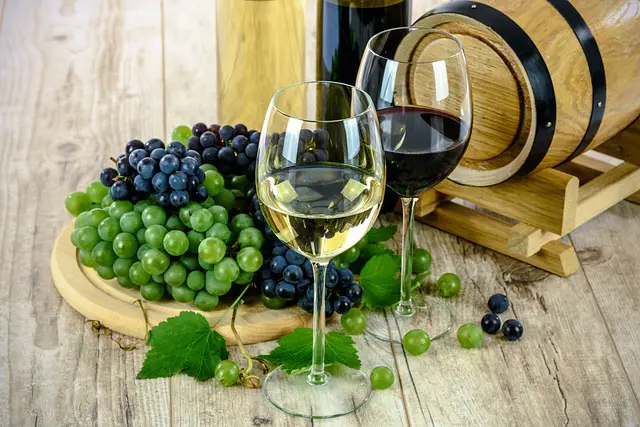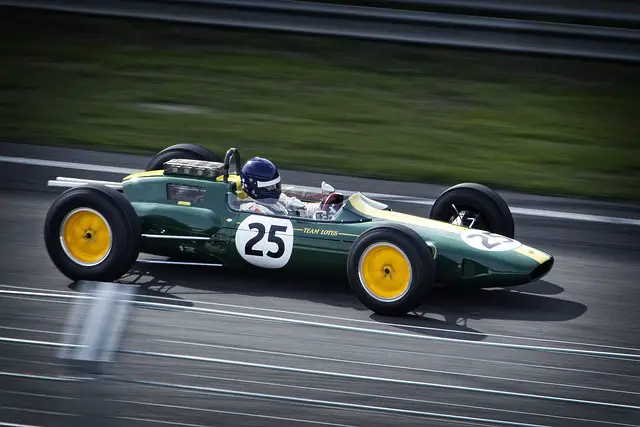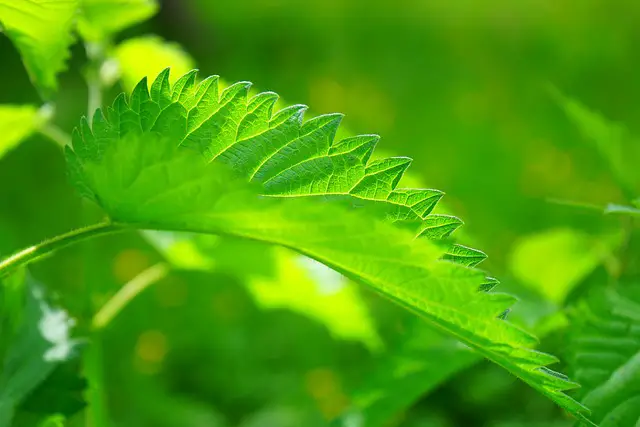Have you ever wondered what sets fine wine apart from the rest? Is it the price tag, the vineyard it hails from, or perhaps the mind-boggling number of adjectives used to describe its taste? If you find yourself pondering over these questions, then you have stumbled upon the perfect article. Today, we delve into the realm of fine wine, uncovering its true essence and exploring how it can elevate your overall wine experience. From unraveling the enigmatic factors that make a wine “fine,” to sharing expert tips on how to appreciate it, get ready to embark on a delightful journey that will leave you with a newfound appreciation for the nectar of the gods. Whether you are an aspiring wine connoisseur or simply someone interested in enhancing their gustatory pleasures, this article will be your ultimate guide. So, grab a glass, pour yourself a generous serving, and let’s begin our exploration of fine wine.
Obsah
- 1. Understanding the Nuances: Unveiling the Characteristics of Fine Wine
- 2. From Grapes to Glass: The meticulous Journey of Crafting Fine Wine
- 3. The Art of Tasting: Mastering the Techniques to Appreciate Fine Wine
- 4. Cellaring Secrets: Exploring the Aging Potential of Fine Wines
- 5. Exploring Terroir: How Soil and Climate Shape the Flavors of Fine Wine
- 6. The Fine Wine Regions to Watch: Dissecting the World’s Most Prominent Vineyards
- 7. Beyond Reds and Whites: Exploring Fine Wine Varietals and Blends
- 8. Elevating Dining Experiences: Pairing Fine Wine with Food for a Culinary Symphony
- Final Thoughts
1. Understanding the Nuances: Unveiling the Characteristics of Fine Wine
Unveiling the Characteristics of Fine Wine
Delving into the complex world of wine can be an enchanting journey filled with countless nuances and distinctive characteristics. Fine wine, in particular, possesses a refined elegance that captivates the senses and intrigues the palate. To truly understand the enchantment held within a glass of fine wine, one must be attuned to its inherent qualities and appreciate the craftsmanship that goes into every bottle.
One of the fundamental aspects that set fine wine apart is its exceptional bouquet. A symphony of aromas graces the nostrils, revealing fragrant hints of ripe fruits, earthy undertones, and sometimes even the delicate whisper of oak. These complex scents often evolve over time, uncovering new layers of olfactory delights with each swirl and sip. The texture of fine wine also plays a crucial role, with smoothness and complexity dancing harmoniously on the tongue. Velvety tannins and expertly balanced acidity create a pleasing mouthfeel, inviting you to savor every drop.
2. From Grapes to Glass: The meticulous Journey of Crafting Fine Wine
Creating a fine wine is truly an art form, a meticulous journey from the humble grape to the exquisite glass. Every step in the process requires careful attention to detail, expertise, and patience. To produce a bottle of exceptional wine, several key stages need to be executed with precision.
Firstly, the selection of grapes is paramount. Vineyards meticulously cultivate specific grape varieties, each possessing distinct characteristics. A harmonious blend of these grapes sets the foundation for a superb wine. The fruit is carefully handpicked to ensure optimal ripeness and quality. Sorting through the grapes ensures only the finest ones make their way into the next stage of the process.
- Harvesting: Handpicking the grapes at their peak ripeness.
- Sorting: Thoroughly selecting only the highest-quality grapes.
- Crushing: Extracting the juice from the grapes while separating the stems and skins.
- Fermentation: Allowing the grape juice to interact with natural yeast, converting sugars into alcohol.
- Aging: Maturing the wine in carefully selected barrels or bottles to enhance flavors and textures.
- Bottling: Preparing the final product for consumption, ensuring it is sealed and labeled with precision.
As you follow the journey from grapes to glass, you begin to understand the craftsmanship and care that goes into creating a fine wine. Each bottle tells a story of centuries-old traditions combined with modern techniques. Whether it be the vineyard’s dedication to sustainable practices, the meticulous blending of flavors, or the patience required for the aging process, crafting fine wine is an art that celebrates the beauty and complexity of nature.
3. The Art of Tasting: Mastering the Techniques to Appreciate Fine Wine
Appreciating fine wine goes beyond simply sipping it. It is an art form that requires the mastery of various techniques to fully experience the complexities and nuances of each pour. Here, we delve into the fundamental principles that will help you become a connoisseur of fine wines.
1. Visual Examination:
Before diving into the taste, take a moment to observe the wine in your glass. Hold it against a white background and tilt it slightly to examine the color. A richly colored wine might indicate a higher alcohol content or longer aging process. Take note of any hints of seductive garnet or vibrant gold. Similarly, evaluate the clarity of the wine. A crystal-clear appearance suggests a well-made wine. Don’t forget to give the wine a gentle swirl to observe the legs, which can offer insights into the alcohol level and viscosity of the wine.
2. Aromas and Bouquet:
The next step in mastering the art of wine tasting is the aroma evaluation. Swirl your glass gently once again to release the wine’s bouquet. Bring the glass to your nose and inhale deeply. Focus on the different aromas that come to the forefront. Is it fruit-forward with notes of ripe berries or citrus? Or does it exude fragrant floral undertones? Take your time to truly immerse yourself in the wine’s olfactory delights, as the aromas can indicate the grape varieties used, the region it hails from, and even its age. Remember, the bouquet of a well-crafted wine can be as captivating as the taste itself.
4. Cellaring Secrets: Exploring the Aging Potential of Fine Wines
As passionate wine enthusiasts, we often find ourselves intrigued by the art of cellaring and the potential transformation that comes with aging fine wines. Understanding the nuances and secrets behind cellaring can elevate your wine experience to the next level. Here, we will delve into the intricate world of aging wine, uncovering the mysteries that lie within each bottle.
1. Patience is Key: When it comes to cellaring wines, patience is your greatest ally. Fine wines often need time to develop and reach their full potential. Be prepared to wait, as the rewards can be outstanding.
2. Choosing the Right Wines: Not all wines are meant for long-term aging. Consider these factors when selecting wines for your cellar:
- Structure and Tannin: Wines with high acidity, firm tannins, and good structure are more likely to age gracefully.
- Quality and Balance: Look for wines that are well-balanced and made with exceptional quality grapes, as these are more likely to improve with time.
- Vintage Variation: Certain vintages are known for their exceptional age-worthiness. Do some research or consult a trusted sommelier for guidance.
5. Exploring Terroir: How Soil and Climate Shape the Flavors of Fine Wine
When it comes to the world of fine wine, there is much more than meets the eye. Beyond the elegance of swirling liquid in crystal glasses lies a complex relationship between soil, climate, and flavor. Terroir, a French term that encapsulates the unique characteristics of a wine-growing region, plays a pivotal role in shaping the distinct flavors found in every bottle. Let’s delve into the fascinating world of terroir and discover how the soil and climate contribute to the sensory experience that wine lovers cherish.
First and foremost, the soil composition in a vineyard can significantly impact a wine’s flavor profile. Different soil types, such as limestone, clay, or gravel, can impart distinct mineral flavors into the grapes. For instance, limestone-rich soils tend to produce wines with crisp acidity and a vibrant backbone, while clay-based soils can contribute to wines that are fuller-bodied and more tannic in nature. It is remarkable how something as seemingly mundane as soil can profoundly shape the nuances found in a glass of wine.
- Climate: The climate of a wine region is equally influential in determining flavor. A combination of temperature, sunlight exposure, and precipitation levels all play a role. Cool climates, with their moderate sunlight and cooler temperatures, create wines that are delicate and acidic, often showcasing flavors of green apple and citrus. In contrast, warmer climates produce riper grapes, yielding wines with higher alcohol content and flavors of blackberries or black cherries.
- Microclimate: Beyond the general climate, microclimates within a vineyard can exist, creating even more diversity in taste. Factors like slope, altitude, and proximity to bodies of water can influence the grapes on a micro level. South-facing slopes may enjoy more sunlight, resulting in concentrated flavors, while cooler altitudes might promote more delicate bouquets. These microclimates add another layer of complexity to the already intricate tapestry of terroir.
- The Marriage of Soil and Climate: Truly exceptional wines are often the result of a harmonious relationship between soil and climate. It is the symbiotic dance between the two that elevates fine wine to its greatest potential. When the soil and climate align perfectly, the grapes are nurtured to their optimal ripeness, balancing acidity, sugars, and tannins. This harmonization ensures that every sip of wine transports you to the very essence of the terroir, revealing the unique journey it has traveled from vine to bottle.
6. The Fine Wine Regions to Watch: Dissecting the World’s Most Prominent Vineyards
Welcome to a captivating journey through the captivating world of wine! In this section, we delve into the most remarkable vineyards from around the globe that have managed to captivate the hearts and palates of both connoisseurs and enthusiasts. These exceptional regions embody the essence of winemaking, intertwining the terroir, climate, and centuries-old traditions to produce some of the most sought-after wines on the planet. Let’s uncork our curiosity as we explore some of the world’s most prominent wine regions that are absolutely worth watching!
1. Napa Valley, California: Situated on the west coast of the United States, Napa Valley is renowned for its exceptional Cabernet Sauvignon, Chardonnay, and Merlot. Its warm climate, fertile soils, and meticulously cared-for vineyards result in bold and luscious wines. Notable wineries in the region include Opus One, Dominus Estate, and Stag’s Leap Wine Cellars.
2. Bordeaux, France: Recognized as a benchmark for winemaking, Bordeaux is synonymous with elegance and refinement. The region’s unique combination of gravel, clay, and limestone soils, along with the temperate maritime climate, create the perfect conditions for producing world-class red blends. Discover illustrious châteaux such as Château Margaux, Château Lafite Rothschild, and Château Latour.
3. Barossa Valley, Australia: Nestled in South Australia, Barossa Valley showcases the exceptional quality of Shiraz and Grenache varietals. The warm climate, ancient soils, and countless old vineyards contribute to the region’s distinct and robust wines. Be sure to savor the offerings of esteemed wineries like Penfolds, Henschke, and Torbreck.
7. Beyond Reds and Whites: Exploring Fine Wine Varietals and Blends
When it comes to wine, most people are familiar with the classic red and white varieties. However, the world of fine wines offers a rich tapestry of flavors and aromas that extend far beyond these familiar options. Exploring fine wine varietals and blends opens up a whole new world of possibilities for wine enthusiasts and connoisseurs alike.
One intriguing varietal to explore is the Gewürztraminer. Originating in Germany, this white wine grape creates a unique blend of exotic aromas, often encompassing notes of lychee, rose petal, and spice. Pairing beautifully with Asian cuisine or spicy dishes, Gewürztraminer offers a refreshing and fragrant experience for the palate.
Moving on to reds, Malbec is another varietal that demands attention. Originally from France but now primarily grown in Argentina, Malbec wines boast a deep, dark color with intense fruit flavors, such as blackberry and plum. With velvety tannins and a long finish, Malbec pairs superbly with grilled meats or strong cheeses, making it a go-to choice for those seeking bold flavors.
- Cabernet Sauvignon: Known for its full-bodied nature, this red wine is a staple in many wine cellars. With rich dark fruit flavors and firm tannins, it pairs well with hearty meats and aged cheeses.
- Riesling: A versatile white wine varietal, Riesling can range from bone dry to lusciously sweet, catering to a variety of tastes. Its vibrant acidity pairs harmoniously with spicy cuisines and seafood dishes.
- Merlot: Often prized for its smoothness and approachability, Merlot offers a range of flavors from blackberry and plum to cocoa and vanilla. It serves as an excellent complement to pasta dishes and roasted vegetables.
8. Elevating Dining Experiences: Pairing Fine Wine with Food for a Culinary Symphony
Pairing fine wine with food is an art form that elevates dining experiences to new heights, creating a symphony of flavors that dance on the taste buds. It is the harmonious marriage of exquisite wines and delectable dishes that takes culinary enjoyment to a whole new level.
When it comes to pairing wine with food, there are a few key principles to keep in mind. Firstly, consider the flavor profiles of both the wine and the dish. A bold, full-bodied red wine, such as a Cabernet Sauvignon, pairs beautifully with rich, hearty meats like steak or lamb. On the other hand, a light, crisp white wine like Sauvignon Blanc complements delicate seafood or fresh salads. Matching the intensity of flavors is essential for a successful pairing.
- Contrast flavors: Pairing a sweet wine with a spicy dish can create a delightful contrast that enhances both elements. The sweetness of the wine can help balance out the heat of the spices, creating a harmonious balance on the palate.
- Consider acidity: High-acidity wines like Pinot Grigio or Champagne can cut through rich, creamy dishes, cleansing the palate and preventing the flavors from becoming overwhelming.
- Explore regional pairings: Wine and food often have regional affinities. For example, a bold, smoky Australian Shiraz pairs wonderfully with grilled meats, while a delicate Provençal Rosé complements Mediterranean-style cuisine perfectly.
Ultimately, pairing fine wine with food is about personal preference and experimentation. Don’t be afraid to try unconventional pairings or seek advice from knowledgeable sommeliers. The key is to find a combination that pleases your own taste buds and enhances your dining experience. So, ignite your senses, explore the world of wine and embark on a culinary adventure like no other.
Final Thoughts
In conclusion, fine wine goes beyond taste, encompassing the entire experience. By understanding its qualities and how to appreciate them, you can elevate your wine knowledge and truly savor each sip. Cheers to a more refined wine experience!









